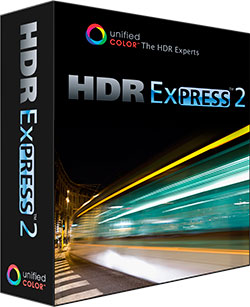HDR Express 2

 Easily Create HDR Images
Easily Create HDR Images
HDR Express 2 takes a complicated process and simplifies it, especially for people new to creating HDR images. HDR Express 2 expands your dynamic range in a photorealistic way instead of the more prevalent stylistic or surreal effects. It installs as a plug-in with Lightroom or Aperture, and also works as a standalone program.
HDR Express 2 is faster and features new deghosting and adaptive tone-mapping algorithms. In the standalone version, the new Image Browser lets you navigate and open images from your folders more efficiently. It automatically and accurately sorts, groups, and arranges your bracketed exposure sequences into thumbnail sets by format. So if you shoot both RAW and JPEGs simultaneously, but only want to use RAW files for your HDR images, the browser automatically arranges it.
The interface is well designed for an efficient workflow. Your merged, tone-mapped image appears in a large window. Below are thumbnails of 11 optional tone-mapped preset effects for you to build from (e.g., Vivid, Grunge, Open Shadow, etc.). On the right side of the preview window, you can finesse your image with eight basic control sliders: Exposure EV, Highlights, Shadows, Black Point, Contrast, Saturation, Warmth, and Tint. These control sliders can be frustrating. Instead of updating the image in real time as you adjust the slider, it only processes the image when you stop and release the mouse button. This results in unnecessary readjustments if you've unknowingly gone too far.
Any adjustments you make can be named, saved, and added as a new preset. Still, I wish the diversity of supplied presets were greater to give beginners more avenues for creative departure. Finished files can be saved as TIFFs, JPEGs, or as a 32-bit BEF proprietary format. Express 2 performs well and produces quality HDR images.
Company:Â Unified Color
Price: $99 (Upgrade: $59)
Web: http://www.unifiedcolor.com
Rating:Â 4
Hot:Â 32-bit color; good highlight and shadow retention
Not:Â Relatively expensive
